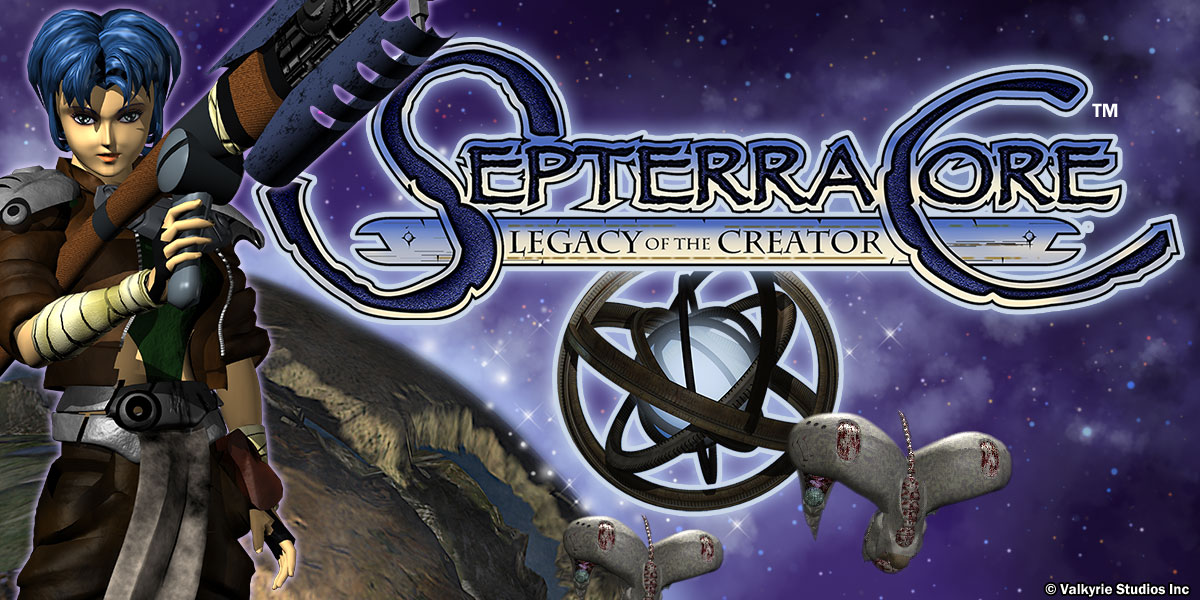Septerra Core: Legacy of the Creator marked its 20th anniversary since publication late in 2019. What follows is part 07 of a deep dive retrospective on the making of this cult classic RPG!
(BTW – In case you missed them, here’s Part 01, Part 02, Part 03, Part 04, Part 05, Part 06, Part 07, and Part 08)
1999 would finally see the release of Septerra Core. The team was working hard on getting it out the door but fate and hubris decided to throw a few final wrenches into the works—it would be a very bumpy ride to publication…
One (and Only One) CD-ROM to Rule Them All
In January of 1998 Septerra Core had found a publishing home, passing up opportunities at larger publishers to go with a smaller German-based company. This publisher had been willing to give us a lot of leeway in terms of creative control. However, to keep manufacturing costs down we were obligated to ship the game on exactly one CD-ROM. That meant finding creative ways to squeeze everything onto one tiny disc.
We had built the game with that goal, utilizing proprietary animation and level art tools to keep the graphical assets down. Plus, the dialogue (all five hours of it) would be down-sampled to save tons of room (but still fill up a quarter of our final disc space!).
But we still had to cut corners. We would have preferred to at least DOUBLE the number of animation frames but that just wasn’t feasible. Likewise, we would have loved to have more variety in combat music (and more music in general!) but there just wasn’t room. We also had to skimp on unique enemies. That meant the player would be encountering the same thirty or so baddies over and over (not counting bosses/endbosses). To make up for it we tried to create a bunch of enemy variations for each type, using palette swaps, stats, and new skills to make them feel different.
The Non Player Characters (NPCs) in the game also had to be endlessly recycled. Here again we tried to be clever with palette swapping—changing skin and clothes colors. But we also tried to use palette swapping to change the actual cut of their clothes, giving them long or short sleeves, for example.
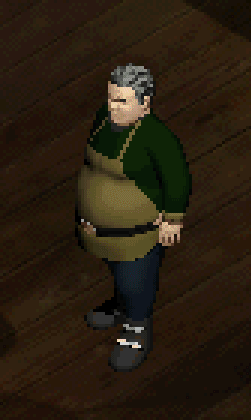
By May of 1998 things were really cooking. Cathi and I were invited to a press event in Germany where Septerra Core and several other games were being announced by the publisher. The party was held at the Bavaria Film Studios in Munich, more specifically on the set of the 1985 sci-fi movie Enemy Mine (apparently it was kept around as part of the studio tour).That was a bit surreal, mingling with the press and other developers, being introduced to Redbull and Vodka (Redbull and its “wings” weren’t really a thing in the States just yet) all while on a space station.


Overall, Septerra Core’s future was looking bright.
In mid 1998 we started putting together a teaser trailer, (touting a release date of early 1999). We hadn’t started recording dialogue and combat was still being coded, but we figured we could add final footage before the trailer was eventually released. It was never used.
Achtung, Baby!
Unfortunately, as we entered the final stretch of development in late 1998 our decision to partner with a smaller publisher came back to bite us in the worst possible way.
Our publisher claimed to have lost around 13 million Deutsche Marks (DM) (approximately 7.8 million USD in 1998 dollars) to embezzlement by a business partner / advisor. That business partner then accused the publisher’s upper management of tax evasion to the tune of DM 3 million. In September of 1998 the publisher’s chairman of the board was arrested and the offices of the company and its lawyer were searched by police. The chairman would be incarcerated pre-trial for a year, while ongoing investigations ballooned the tax fraud charges to DM 7 million (approx. 4.2 million in 1998 USD). The muckraking between the two sides would soon be in full swing, with accusations that the publisher’s management had threatened violence up to and including death threats.
But that wasn’t all. Our publisher was also losing money because of telephone books. Yes, telephone books, those ancient, tree-killing compendiums of phone number listings. In the States they were the Yellow / White Pages. Our publisher had made headlines in the late 90s for releasing “unauthorized” CD-ROM versions of the European equivalents. The first edition was just scans of the actual hard copies, leading to lawsuits alleging copyright infringement filed by the telecom company that published the original phone books. Our publisher got around this by outsourcing typists in China to enter the data from the books by hand.
Our publisher liaison assured us that everything was business as usual. Meanwhile, we were still trying to make a game, and in late 1998 / early 1999 we started recording the dialogue with TotalAudio. The audio studio fire was in January of ’99, but even with that set back, we continued to forge ahead with development.
Unfortunately, our publisher’s legal battles and embezzlement woes would eventually trickle down to us. They were strapped for cash and their chairman (the man we signed our deal with) was considered such a flight risk that he was still sitting in German jail pre-trial.
Ultimately, they stopped paying us for the development milestones we were delivering.
And with no money coming from the publisher, we were now unable to pay TotalAudio for the final delivery of dialogue and music, let alone keep our lights on and pay our developers.
And our publisher was threatening to sue Valkyrie into oblivion if we didn’t deliver the finished game! Somehow they thought a startup company had the funds to develop a game to completion without the publisher’s continued backing.
German Invasion
To recap (for those keeping score at home): Our publisher wouldn’t pay us, so we couldn’t pay Total Audio for the final delivery of sound files, so we couldn’t actually finish the game.
And yet, the publisher needed to get product out the door to make sales and keep their own doors open.
Can you say, “chicken and egg”? Yeah, it was a mess.
Meanwhile, we had no choice but to continue working, at least on whatever parts of the game we could in lieu of getting the sound files, in desperate hopes that some solution would be worked out before we would have to close our own doors and let all of our employees go.
The publisher came to visit and check on progress. That was awkward. They spent several days with us, seeing the state of Septerra and the team’s dedication. They also got a chance to play the game—we had already begun work on a “Chapter 01” demo for release to game magazines, and that part of the early game already had sound, dialogue, and music.
One of Valkyrie’s owners was tearing down her office during their visit, packing up her things. This was a bit premature, but she did it to drive home the point to the Germans that Valkyrie, as a new start-up developer, did not have the funds to continue developing the game if the publisher couldn’t pay the money it owed.
To be fair, our main liaison with the publisher—with whom we had a genial working relationship—was clearly stuck in the middle, in an unenviable position of wanting to see us succeed, but also having to appease his bosses.
They eventually returned home to give their report on the state of development, armed with their time with the game and the team. Only time would tell what would happen next…
Making Lemonade out of Lemons
This period of development was incredibly stressful. For the longest time we didn’t know if the game was going to get its final funding, or whether we’d be closing up shop, years of hard work ultimately for naught. The engineers continued working on implementing combat and other features, but the designers and scene scripters could make little progress on building the main story progression of the game.
Once again Septerra Core was in a sort of holding pattern. We made the best of it, though. We were able to spruce up some of the graphics, most notably working on polishing the light and shadow effects and really utilizing them in more places.
“In an early test of the code, I had gotten an equation wrong causing a streetlight to become a “street dark” (made with Dark Emitting Diodes) – casting a pool of darkness instead of a pool of light.”
-Jim, Septerra Core’s Engine Engineer
Likewise, I think this was also the time where the particle system was really improved, something artist/designer Jarod and engine programmer Jim worked on together.
“Originally the programming team assumed all visual effects would be hard-coded,” Jarod remembers, “but I had an idea for how we could allow the effects to be more artist-controlled. We worked with the programmers to develop a particle-emitter tool that allowed us to do some very sophisticated effects, things that took the programmers by surprise. It’s the kind of tool that modern game developers now take for granted, but we’d never had the chance to use anything like it!”
Before this, Jim had hard-coded a bunch of effects, such as rain and snow. But with the artists now in control of effects Jim was free to focus on the engine and combat code.
Another feature that got added at some point was the “Map System.” This was happenstance, really. I had originally envisioned a robust “journal” system, something the player could access to check their progress by reading Maya’s synopsis of what had happened in the story so far, see current objective reminders with gathered clues, and generally check a simple map of the current level. Alas, it was simply beyond the scope of our budget. Still, a map of the player’s environs would be nice, right? One day Jim showed me a cheat shortcut that displayed all the walk areas of the current level—that is, all the areas designated as places the player could traverse—shown by simply drawing the usually invisible 2D polygons that defined them. It wasn’t exactly pretty, but it WAS functional as a simple map. So we turned that cheat into an actual “feature.”
Marketing is Dead, Long Live Marketing
Meanwhile, our delegation of German visitors must have been impressed by what they saw at Valkyrie, because the publisher decided to keep the game alive (once again). But they needed to find a solution to their cash flow problems if they were to keep funding us.
How did they do that? They sold the North American publishing rights to Septerra (along with several other games) to a US publisher. With this infusion of cash they were able to pay Valkyrie what was owed, and in turn Valkyrie was able to pay TotalAudio, take delivery of the final sound assets, and commence the final stage of development.
Suddenly we had another publishing partner in sunny California. All seemed well, and we began to work with them on the American and Canadian marketing plans. Meanwhile, we were able to start implementing the actual meat of the game, utilizing the scripting tools of Terrabuilder to bring Maya’s tale to life.
Select any image enlarge, and select again to learn more.
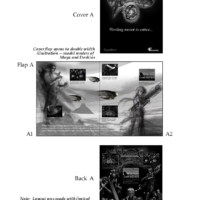
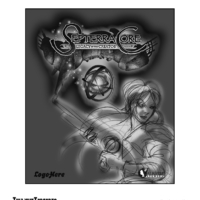
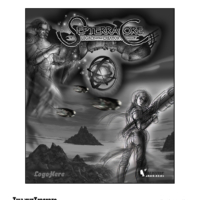
This new American publisher was a great partner. But it soon became clear something was not quite right on their end. They had solved our cash flow problem, sure, but we soon learned that Septerra Core was set to be one the last games they would publish—they had decided to get out of publishing and concentrate on their own in-house game development. I certainly don’t begrudge them that. And yet, they were ramping up to launch our game while simultaneously working to close down their marketing department. So their marketing folks were being tasked with selling our game, while also looking for new jobs.
Who could possibly put their all into promoting a game while the Damocles Sword of impending termination was hanging over their heads?
Their dwindling marketing department also meant that Valkyrie would do a lot more of the heavy lifting when it came to concepting and creating art for the final game box and ads—manpower that would have been better used polishing the game…
Select any image enlarge, and select again to learn more.

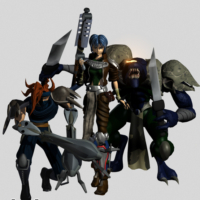



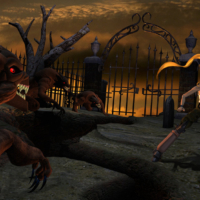
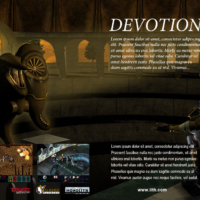

Ambition Gets in the Way
We were now barreling towards a release date in October of 1999, and there were two publishers holding us to it—one that needed to get product on the market to spark cash flow, and one that was about to let much of its marketing department go. Even though we had been delayed (again) that final release date wasn’t going to change.
None of this helped Septerra Core.
Neither did the bone-headed decisions I had made earlier in development.
At some point I had come to the conclusion that the game was not going to be long enough. Somehow I had convinced myself that an epic fantasy RPG needed to be longer. Before this change, most of the dungeon levels maxed out at medium size, about 5×5 screens of real estate. But Terrabuilder could go up to 10×10 levels, and in my desire to make the game epic, I decided to take advantage of that.
I really wish I hadn’t. In hindsight, it inflated the grind in the game. Dungeons became too long. The story also suffered, as players would spend so much time slogging in dungeons between plot points that they would probably forget the details of the story, or remember why they were even fighting in the first place.
This flaw (and any others in the game) rest solely on my shoulders as the Lead Designer. Other developers within Valkyrie argued (wisely) against my level size increase. In fact, some Valkyries had even long argued for a “Story Mode” that would allow players to skip or trivialize combat altogether if they wanted.
And…I just didn’t listen. In retrospect it’s easy to see why. I had been put into a position of creative control and looked to as the “visionary.” I was supposed to have all the answers. As I’ve mentioned in previous installments, the word “genius” was floated my way, by potential investors and even some employees. That kind of stuff goes to your head, especially when you’re young. Spoiler alert: I was not, in fact, a genius. But even if you know better, when everyone is looking to you for all the answers, there’s the real danger that you start to believe the hype and stick to your guns, even if those guns misfired.
Even still, as we approached release I became acutely aware that I had made a mistake with the “dungeon bloat.” This realization was only compounded by the fact that the combat engine had been pushed back by delays and implemented way too late in the development cycle.
And now there would be no time to playtest and fix.
Normally, at the end of a project, there’s time for the development team to polish the game, to take what’s there and make sure it’s the best it can possibly be. This is often why modern games get delayed—the game is essentially done, but the team and publisher make the decision to hold it back and do more polish: fix bugs, trim what isn’t working, lean into what is working.
Very little of that happened with Septerra Core.
No Time for Polish, Dr. Jones!
There was definitely not sufficient time for testing or balancing. An outside testing department ran through the game, but stuck to the win path and didn’t explore or push the boundaries of the game like real players would. Meanwhile, balancing had to be rushed. There was no time to playtest and iterate on combat difficulty. To get any sort of balancing done I had to divide and conquer—I broke the game up into segments and assigned developers to play them. Each segment would start the player with a set amount of experience (XP) and money based on how far into the game’s story it was (estimated on my own testing and gut instincts, really). Each play tester would report back to me on how much experience and money they acquired and how hard or easy the enemies had been. From there I would rebalance the starting points and we’d do another run. We maybe got two or three passes at it.
This is why the game gets significantly easier for most players as they get towards the second half—I had to simply use my gut to guess how much XP a real player might earn in addition to that of the core win path. So most players, who absolutely do explore the world, are a higher level then what was intended towards the end of the game. I knew that would be the case. I knew there was no time to balance the second half of the game, so I had to either err on the side of too easy, or too hard. And since I already knew there was going to be too much combat, and therefore too much grind, I landed on the easier side of things—the last thing I wanted was the player having to grind even more just to get powerful enough to fight the late-stage enemies.
As far as the bloated dungeons, there wasn’t much we could do. Games weren’t as easily patched back then, so what we shipped had to be complete and unbroken (even if patches were coming later). Therefore, making radical changes late in development, like suddenly reducing all the dungeons, meant significantly increasing the chances we would introduce horrific, “show stopper” bugs.
I tried to mitigate the problem in other ways, such as speeding up the pace of combat (and in hindsight, I would have sped it up even more!).
There were so many more areas I wished we could have truly polished, from combat and level size to user interface and overall game experience. And if development had been delayed by our publisher’s money woes closer to the “content complete” stage, when we would have seen a better picture of the near-final product, we could have used that delay time to fix a bunch of it.
Meanwhile, a lot of manpower at Valkyrie was already being pulled into concepting and creating ads and box art, as well as creating the story cut scene videos (another aspect that in modern development would have been outsourced to a dedicated team…)
To this day it pains me that we weren’t able to truly polish and improve the game, because while I’m proud of what we were able to accomplish against all the travails thrown in our way, I know we could have put out a better game with just the right amount of polish.
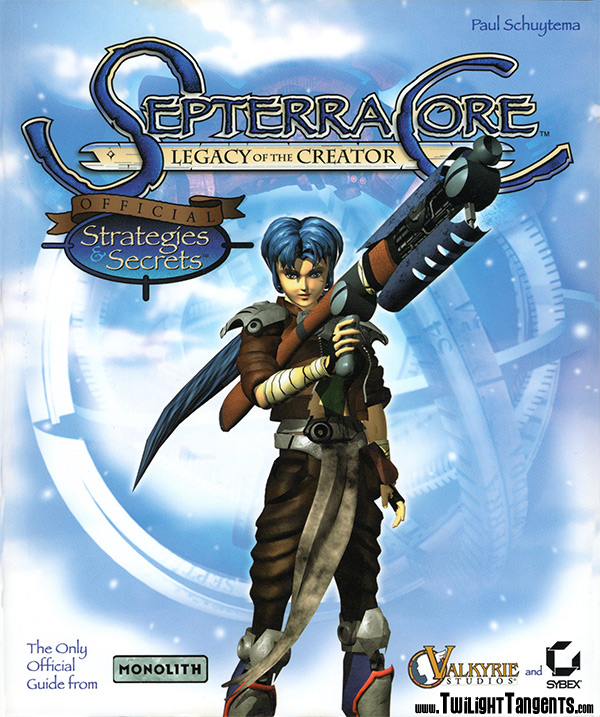
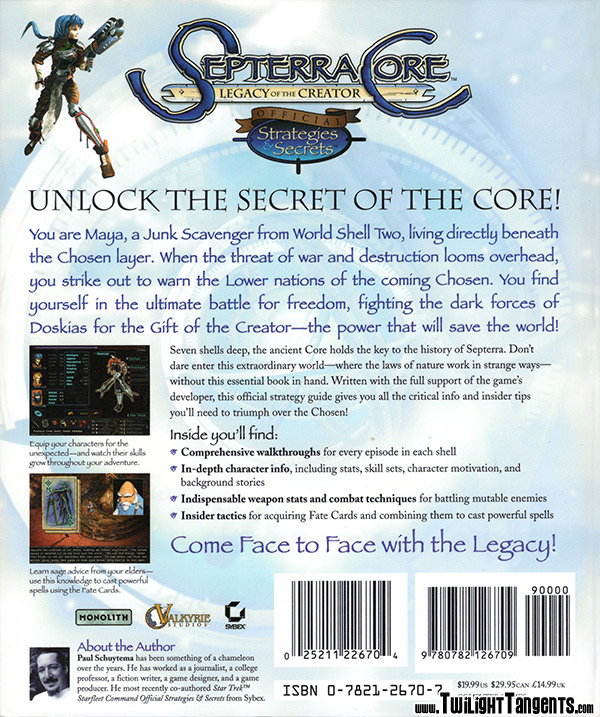
Meanwhile, I was also working with author Paul Schuytema on the Septerra Core Official Strategy & Secrets guidebook. I ended up doing a lot of work to make sure that that the final book was as useful and accurate as it could be. This was another case where a modern developer would now employ more help to act as liaison between dev team and writer, rather than tie up the lead designer who was trying to finish up the actual game…
Publication or Bust
Septerra Core: Legacy of the Creator defied all odds and finally reached publication, for better or worse, in late October 1999.
Select any image enlarge, and select again to learn more.


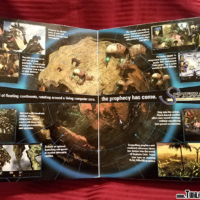
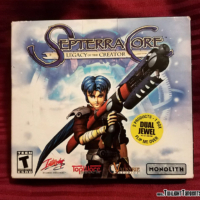




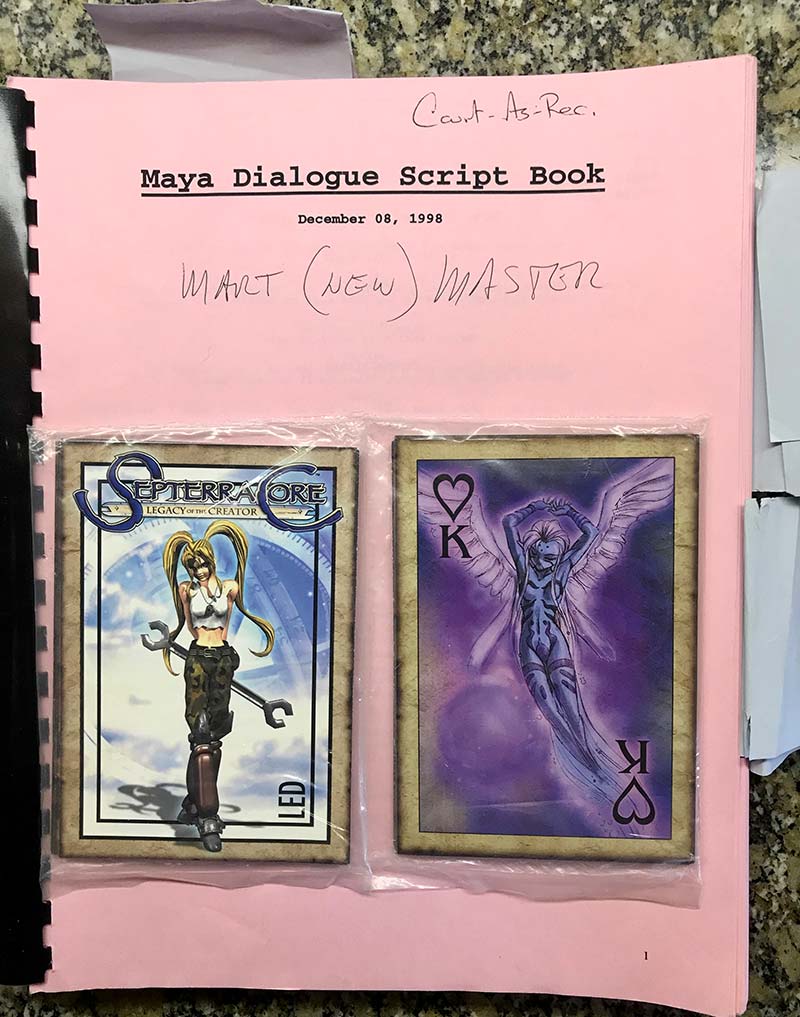
Reviews started to come in, and they were fairly good. Most agreed that the world, story, and characters were the highlights, with the voice acting bringing everything to life in a way that was new and fresh for games. Still, most reviews predictably noted all the things I feared: combat could become a slog and the graphics were a bit dated after all the delays to release.
Still, PC Gamer gave it 86/100, and loved the world and story. Game Revolution awarded it an A-, Compufan and GamePlayer a 95, Gamezilla an 87. Glide Underground scored it a 4/5 and gave it their RPG of the Year Award, while it was also nominated for the same at Game Industry. Meanwhile, VoodooExtreme rated it an 85, while both GamePro and IGN scored it a respectable 80. Other reviews were decent, with outlets such as GameSpy awarding it a 78, PC Magazine a 3.5/5, Electronic Games Review a 3/5.
Not everyone received it well. Most of the hard core computer gaming magazines and websites were definitely not into the console style, represented by PC Game World’s score of 58, and even a few Euro-market magazines (always notoriously harsh back then) scoring it as low as 40.
“In many ways Septerra Core was a flawed game, but while the gameplay was sometimes long and frustrating, the story was top-notch. Adding significantly to the experience is the fact that every line of dialogue is spoken. The anime look and feel combined with the rich plotline to create one of the most epic and gripping stories in the RPG scene today.”
– Game Spy awarded Septerra Core with a special award for story
Select any image enlarge, and select again to learn more.


It’s hard as a game developer to put all those years of work into something, with all the setbacks, near cancellations, and dire straits, and then watch it get reduced to numbers. But that’s how it goes—you just hope that the numbers are high enough, I guess.
While I was glad we got two rounds of ads in American magazines, unfortunately, with our American publisher on the way out and our German publisher still suffering cash woes, that was the extent of our marketing. In fact, our German publisher soon owed heavy damages for its telephone book lawsuits and eventually succumbed to its embezzlement and cash flow problems. It declared bankruptcy in early 2001, little more than a year after Septerra Core was published. And by 2003 the chairman and several others would plead guilty to the charges of tax evasion as well.
And so, the awareness of Septerra Core would largely come down to player word of mouth.

